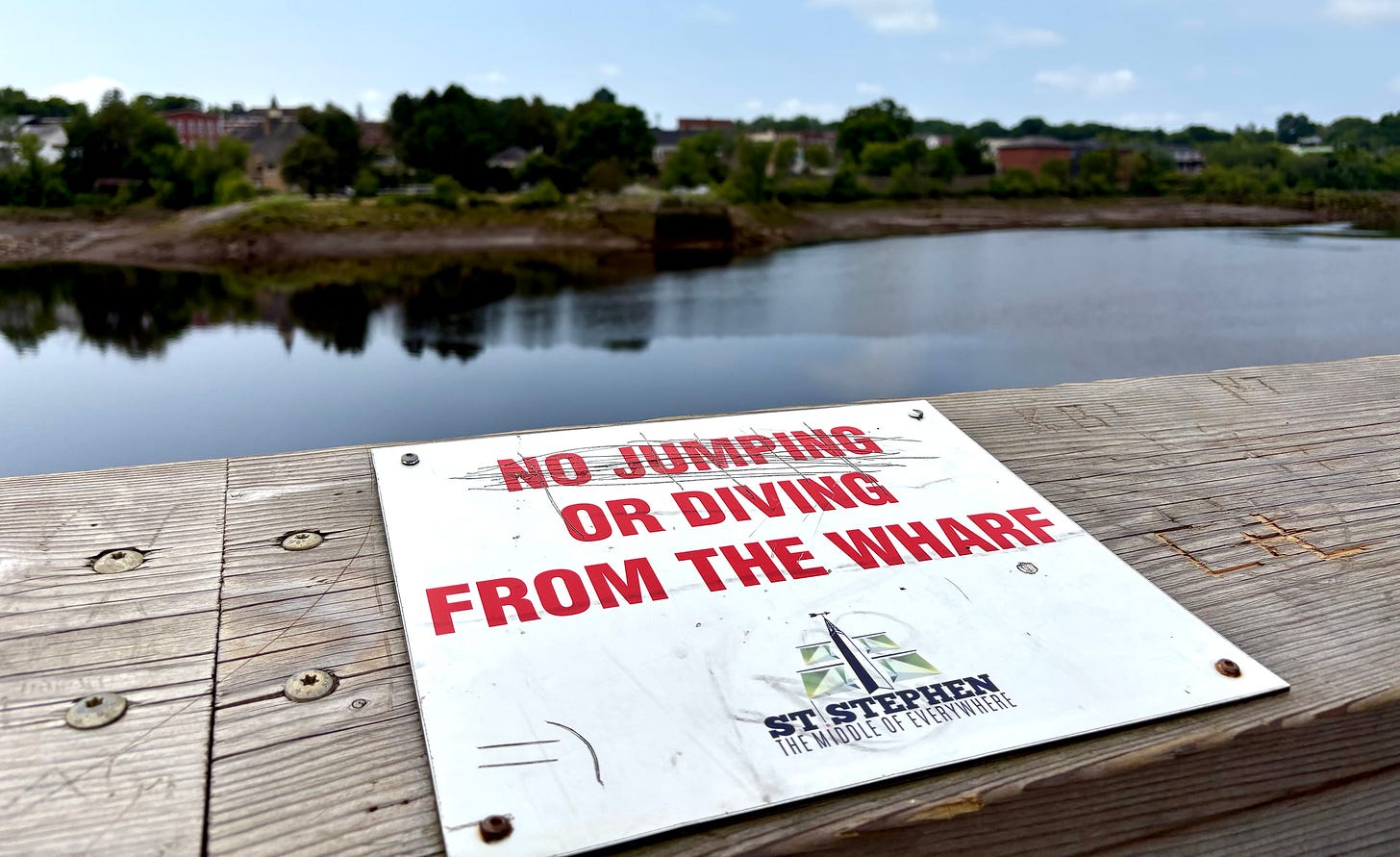The East Coast's Decades-long Pipe Dream
Could a pipeline into Northern New Brunswick help solve the region's slow moving energy crisis?

Hi Everyone - I hope you’ve been enjoying your summer. I took a couple weeks off to hang out with family and friends in Ontario and New Brunswick, and now I’m ready to get back to writing and prep for what should be an active autumn. This column reflects some of the things I’ve been mulling about as I’ve driven around the backroads here on the East Coast. Cheers - Lisa
There’s a certain spot on the Waterford Road where cell phone service dies.
It’s just beyond the last farm, about 15 minutes past Sussex Corner Elementary School, as the road dips down and then curves left, past the tourist sign for the Urney Road covered bridge and just beyond that, the entrance to Poley Mountain.
Regardless of provider, no conversation can continue past this point, which is why a few years ago Poley Mountain Resorts installed its own small system so skiers and mountain bikers could have access to wi-fi while on the hill or in the chalet.
Living in the Maritimes means learning to accept that infrastructure is rarely as expansive as the views.
It’s as if the strip of southern Canada that runs east-west along the Canada-U.S. border is an all-inclusive resort and everything beyond that a nice-looking RV Park where you sometimes have to jerry-rig your own solution.
The cause of this discrepancy is usually credited to two long-standing reasons.
First, the population is small and dispersed. For instance, New Brunswick is home to roughly the same number of people as Winnipeg, MB spread across an area 14 times larger.
The second reason is our terrain. The four Atlantic provinces are part of the Appalachian Region, which closely resembles our country’s largest topographical feature, the Canadian Shield.
The same rock formations that create the business case for copper, tungsten, and zinc mining turn investors away at the thought of laying and maintaining telecom and energy transmission systems that service all of the East Coast.
That doesn’t stop Atlantic Canadians from asking for better access to phone service, the Internet, passenger trains, airlines, and energy; services that are well-funded and accessible from Vancouver Island to Quebec City.
Enter the Eastern Energy Partnership, the $8-billion pitch to power up Atlantic Canada’s energy infrastructure so the East Coast can at long last be fully connected to the rest of Canada.
Initially, energy wasn’t at the top of the wish lists for the four Atlantic premiers when they individually pitched Prime Minister Mark Carney and One Canadian Economy Minister Dominic LeBlanc on potential nation-building projects last spring.
For instance, New Brunswick Premier Susan Holt said she was focused on four projects to support nation building: develop critical minerals; modernize national defense via CFB Gagetown; boost the province’s modular housing production to address Canada’s housing shortage; and develop the province’s energy infrastructure, which could include nuclear, wind and biomass, to lower costs by increasing supply.
The response from the federal government was...meh.


